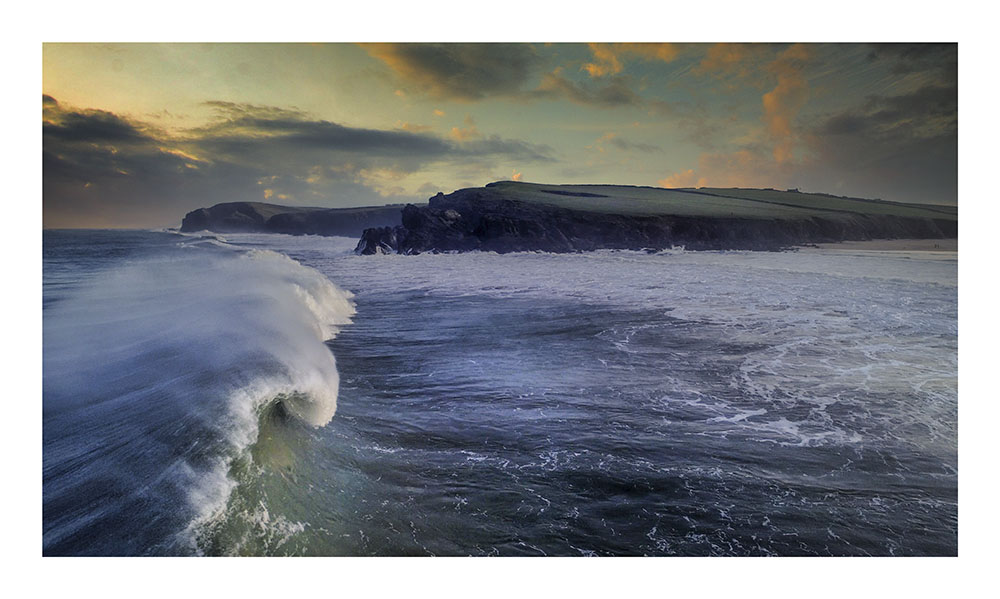Landscapes
Breakers at Trevone Bay
Plunging wave at Trevone bay
Waves travel with little change across the vast expanses of the open ocean, but eventually all waves must reach shore. As a wave approaches the coast, it becomes shorter in length and more abrupt, increasing its height. Friction with the bottom causes the trough of the wave to disappear, the crest to slow its movement, and when the depth causes the wave height to become 1.3 times the water depth, the crest falls, forming a breaker.
There are four basic types of breaking waves: spilling, plunging, collapsing, and surging.
- Spilling waves are gentle waves with crests that break softly towards the shore. These waves break when the ocean floor has a gradual slope.
- Plunging waves break when the ocean floor is steep or has sudden depth changes. They can be powerful barrels or enormous close-outs.
- A collapsing wave is a mix of spilling and plunging waves.
- Surging waves are the result of long period swells. As a result, the wave is slow, the faces are smooth and oblique, and the crest barely exists. These waves may not break at all. Breaking waves have a deep trough; surging waves do not.

